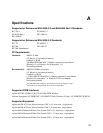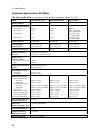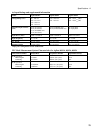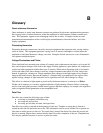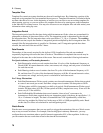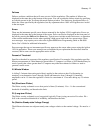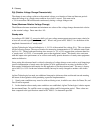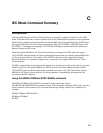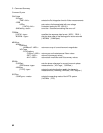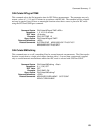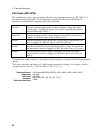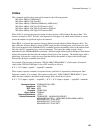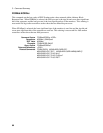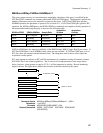
B - Glossary
80
D(t) (Relative Voltage Change Characteristic)
The change in rms voltage, relative to the nominal voltage, as a function of time and between periods
when the voltage is in a steady-state condition for at least 1 second. D(t) must not be
> 3% for more than 200 milliseconds continuously during a voltage change event.
Dmax (Maximum Relative Voltage Change)
The difference between maximum and minimum rms values of the voltage change characteristic relative
to the nominal voltage. Dmax must be ≤ 4%.
Steady-state
According to EN 1000-3-3, successive half-cycle rms voltage measurements must meet some criteria for
at least one second to qualify as "steady-state". What is not given in IEC 1000-3-3 is a definition of the
amplitude characteristic of "steady-state".
Agilent Technologies’ inferred definition is +/- 0.15% of the nominal line voltage (Un). This was chosen
for the following reason: The error allocation for measuring instrumentation is 5% while the stated limit
for Dc is 3%. Taking both specifications into account (i.e. 5% of 3%) suggests that a tolerance band for
a "steady-state" of 0.15% is a reasonable guess at the regulation’s intent. This band is also consistent
with the output noise performance of ac sources and readily permits detection of steady-state equipment-
under-test behavior.
Since setting this tolerance band is critical to detection of voltage change events, and to avoid imposing a
specific interpretation of steady-state, the Agilent 14761A application uses an entry in the hfts.ini file
that contains initialization information for the application to set the tolerance band. The entry is factory
set to 0.003 (i.e. 0.3% for the total tolerance band), but may be easily changed to another value in this
file.
Agilent Technologies has made two additional interpretive inferences that are directed towards meeting
the intent of the regulation while permitting a practical implementation:
1. Steady-state conditions may never be achieved during a test, in which case values for Dmax, Dc, and
Dt will not be reported.
2. In the situation where steady-state conditions are established, Agilent Technologies’ solution reports
the maximum Dmax, Dc, and Dt events occurring within each Pst integration period. These values are
then compared to the specifications stated in IEC 1000-3-3 to determine pass/fail.




